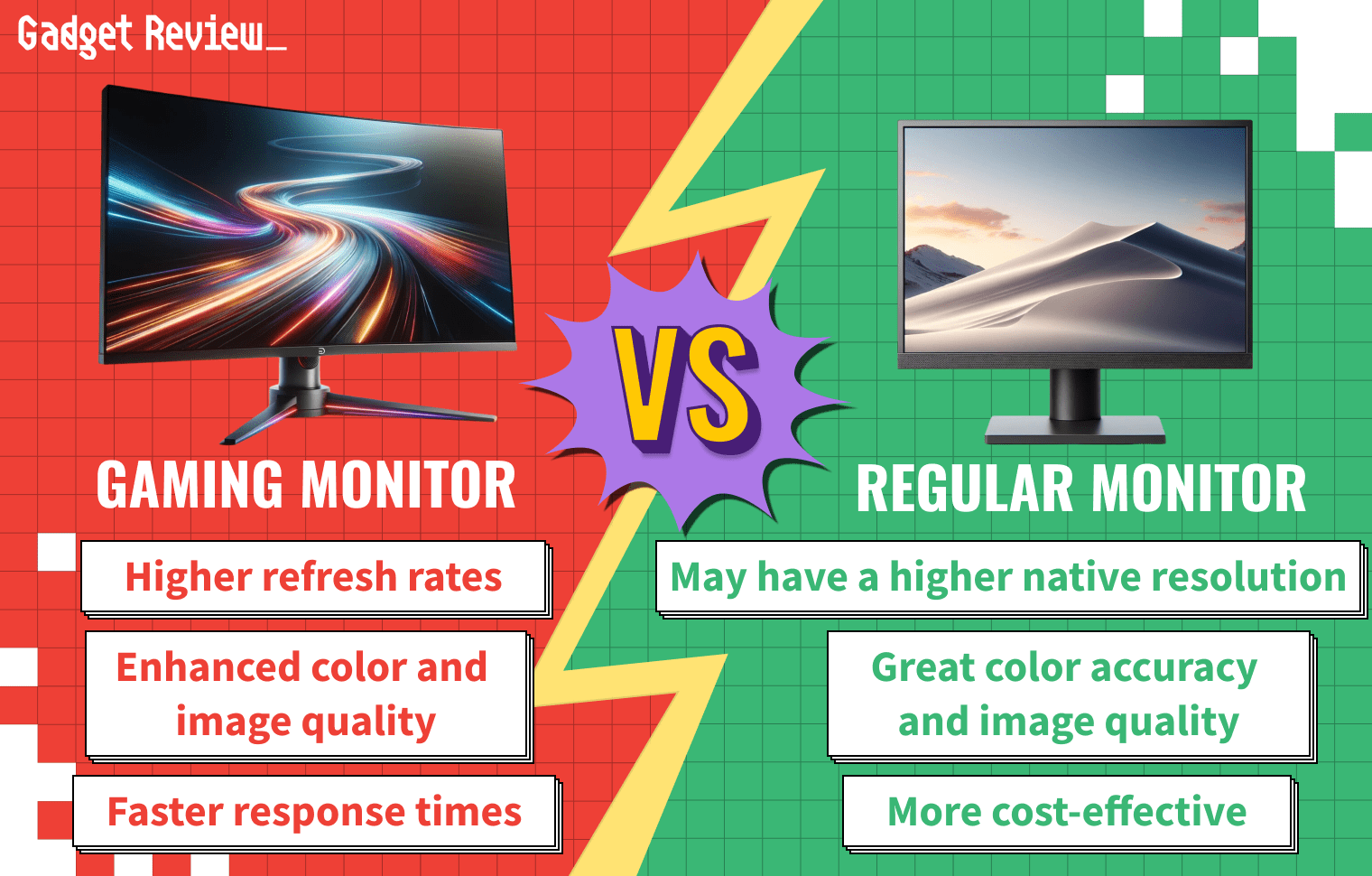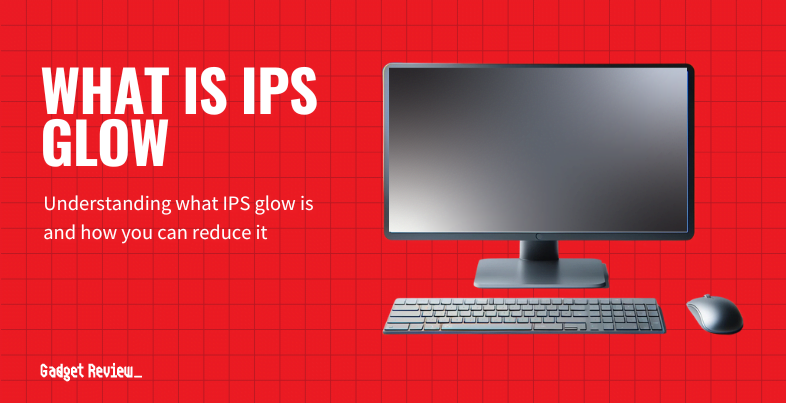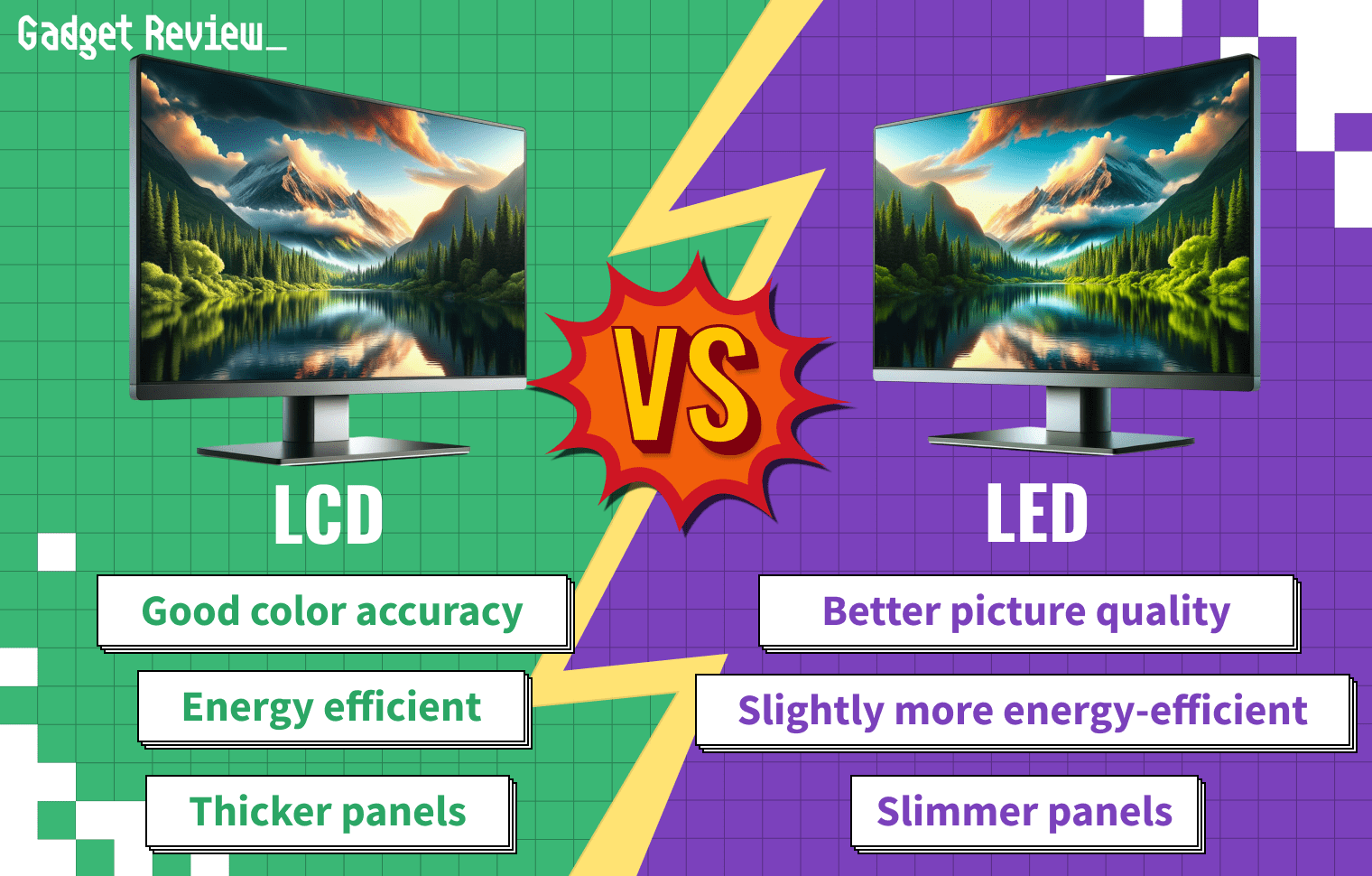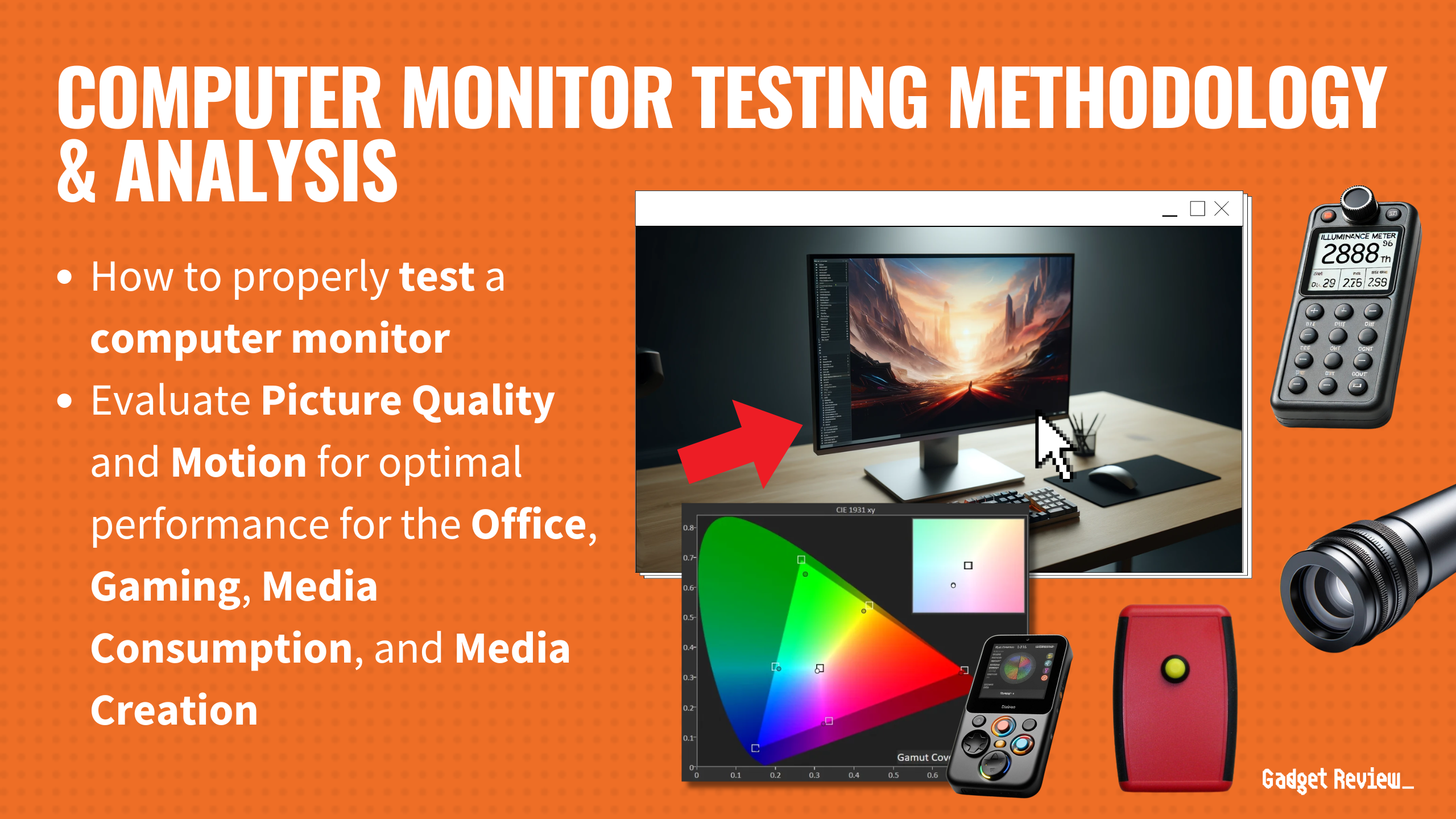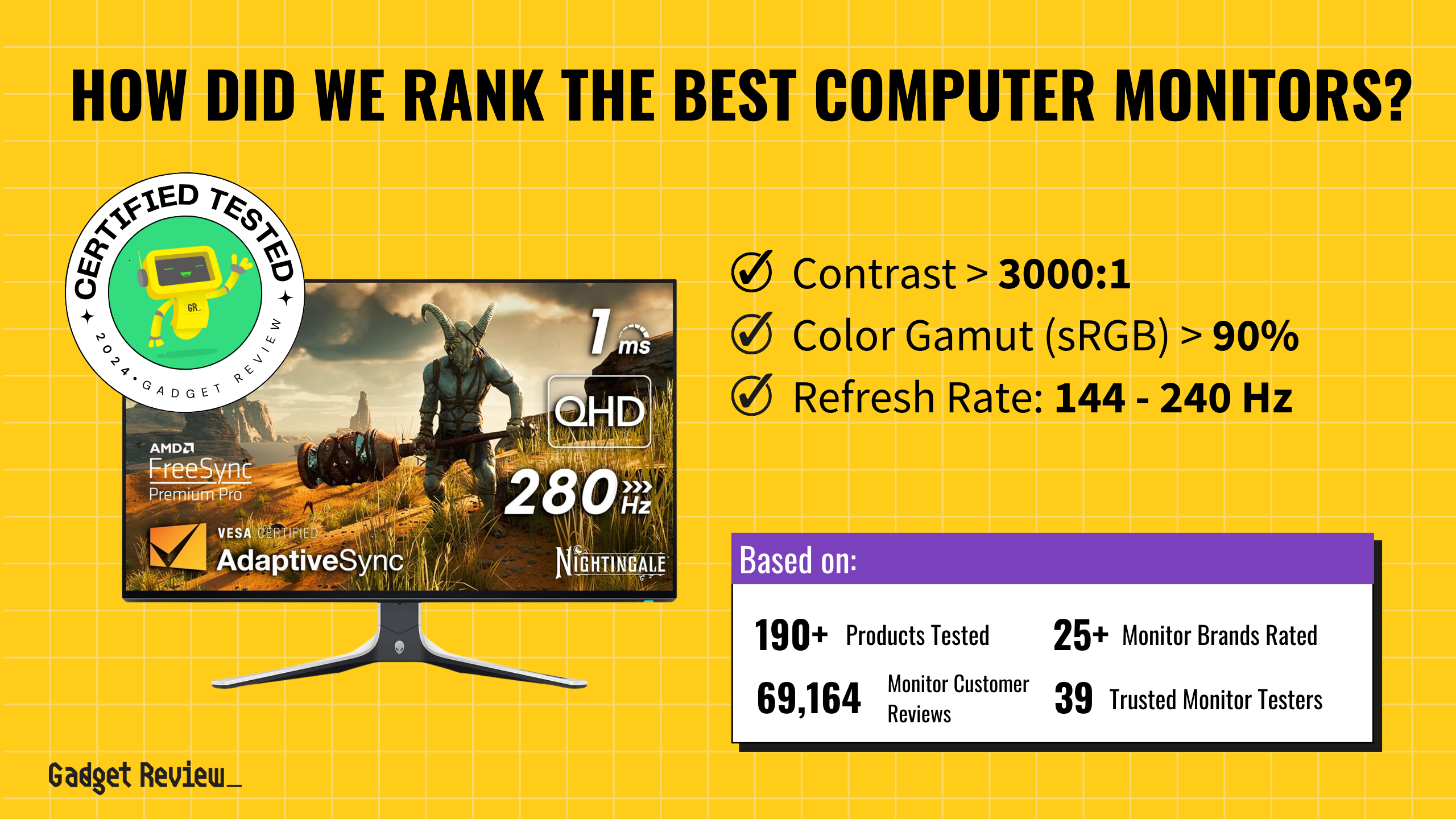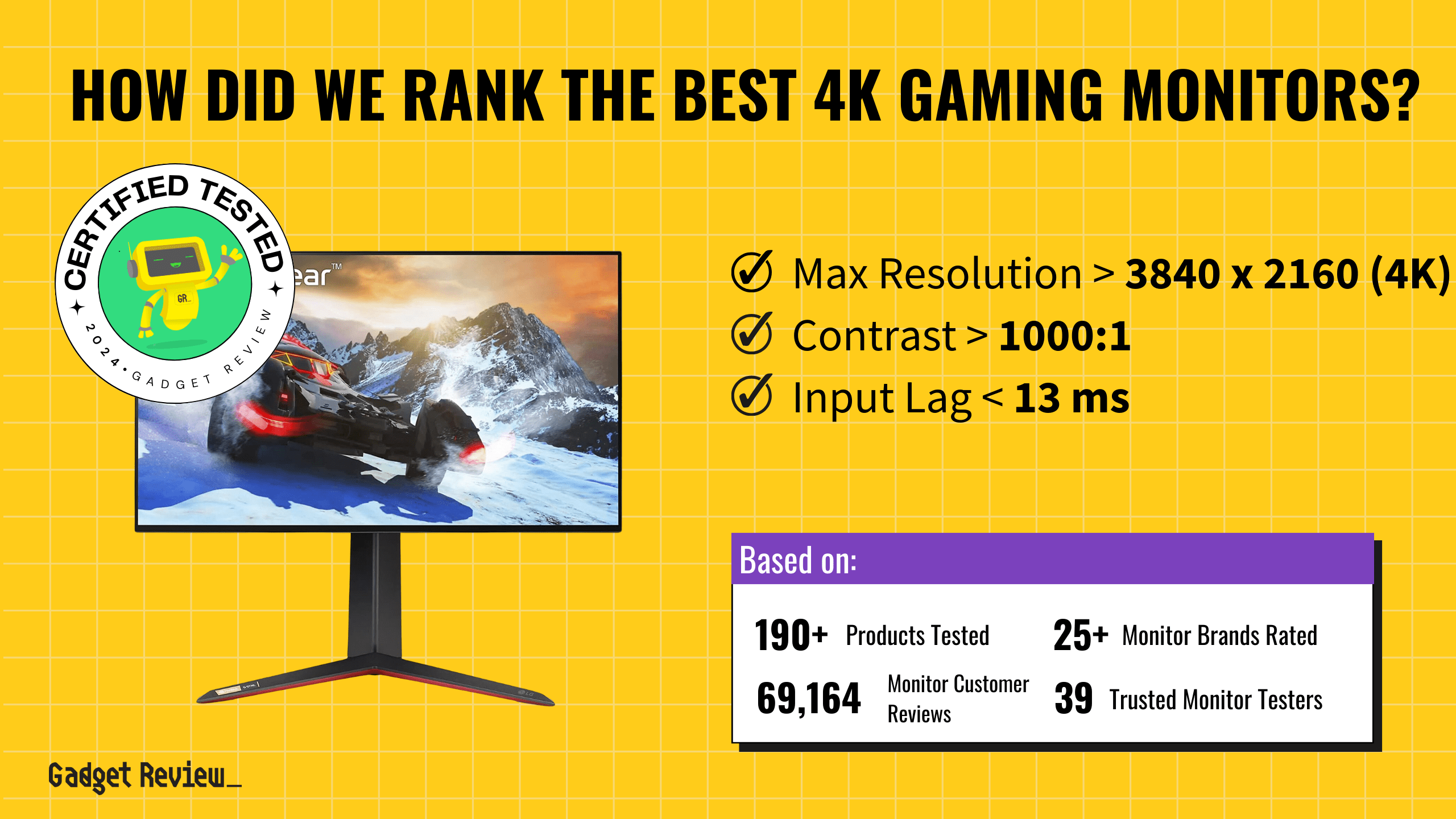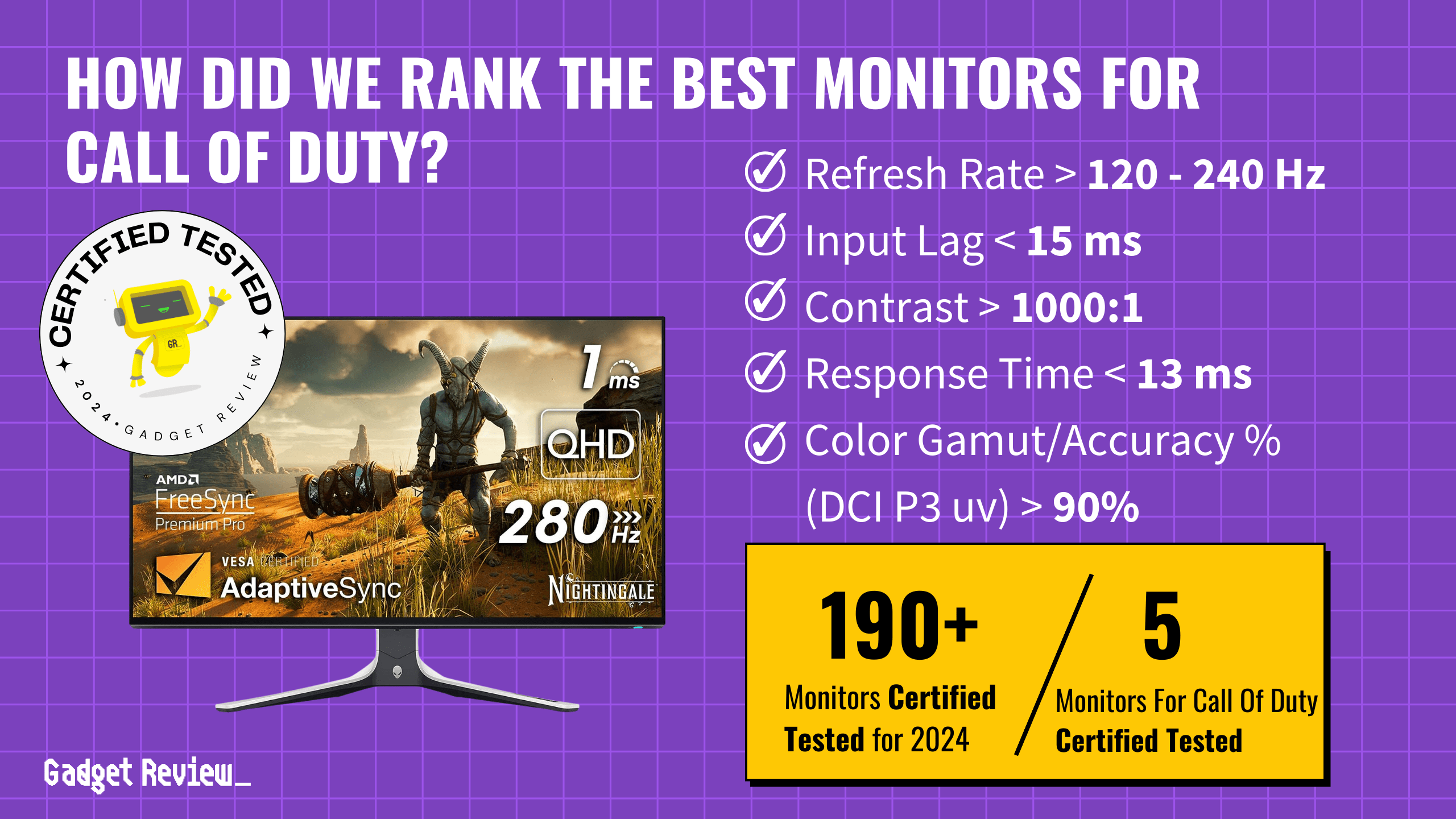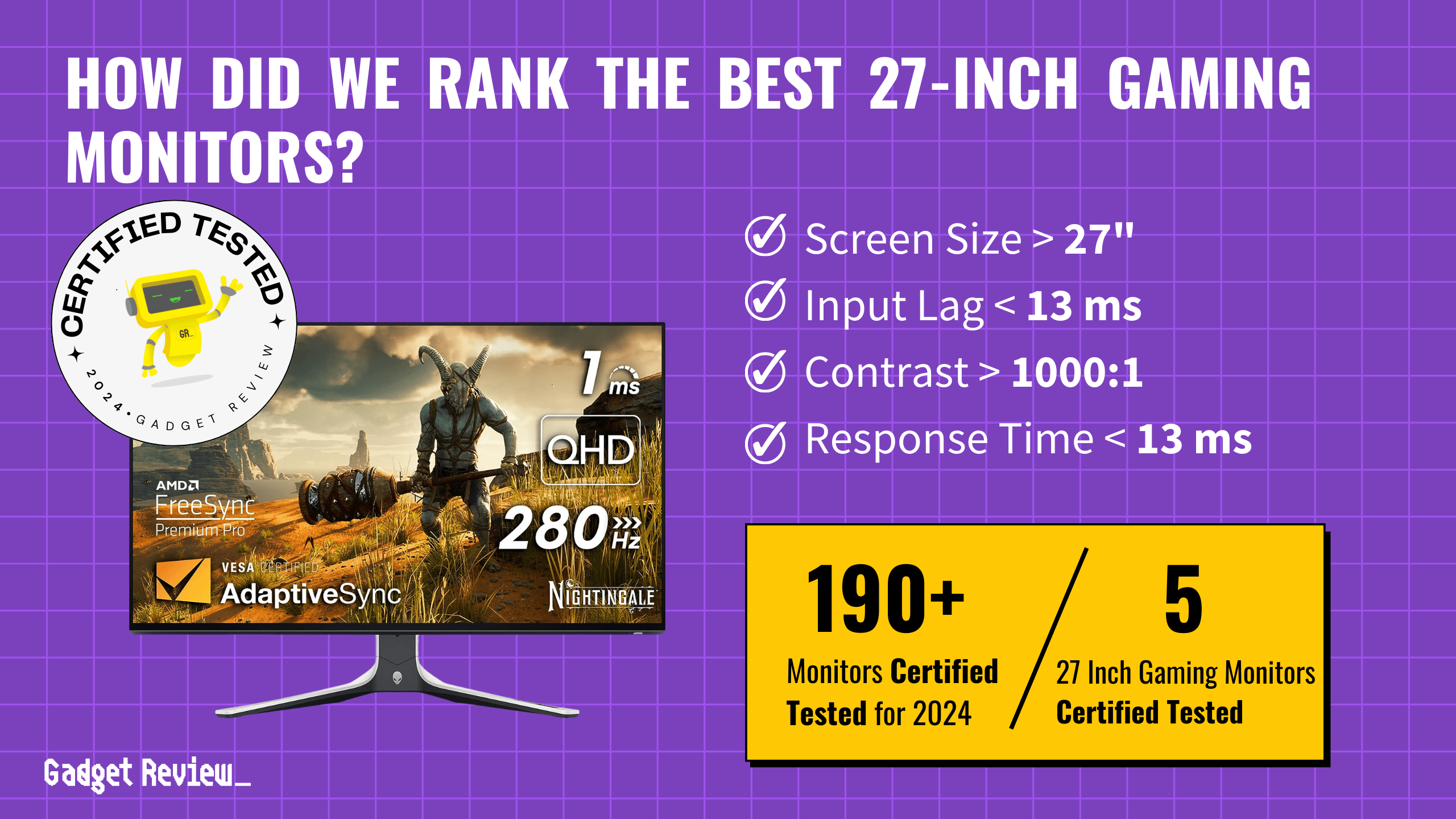If you are shopping around for a new display and need some monitor buying guide tips, you may be comparing gaming monitors and regular monitors. Some of the best computer monitors, after all, can easily double as gaming monitors. However, the best gaming monitors will typically have higher refresh rates and lower response times, among other key differences. So, what else makes a gaming monitor different from a traditional computer display? Keep reading to find out.
Key Takeaways_
- Dedicated gaming monitors tend to feature beefier specs, with a faster response time and a variable refresh rate.
- Regular computer monitors can offer higher resolutions than gaming monitors, as UHD displays demand more processing power.
- Gaming monitors tend to cost more than regular monitors due to all of the additional gaming-centric features.
Differences Between Gaming Monitors and Regular Monitors
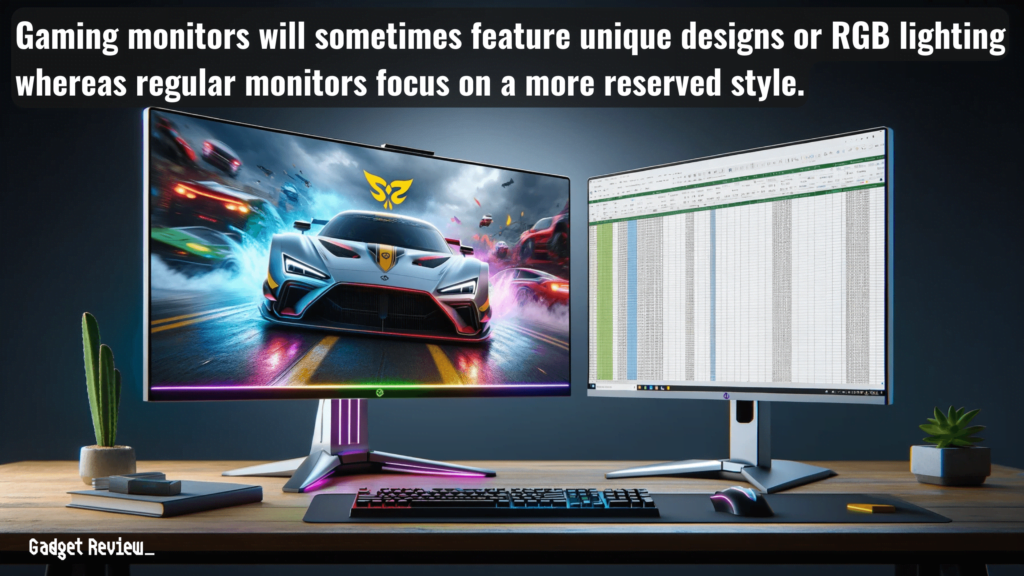
There is not simply one key difference between gaming monitors and computer monitors, as it is more a number of slight differences that add up to a completely different product.
As the names suggest, gaming monitors are ideally suited for graphically intensive PC games, while standard computer monitors are built for everyday use, not focused on any specific use case.
Both types of monitors come in different shapes and sizes.
Here are some more differences between gaming displays and regular computer displays.
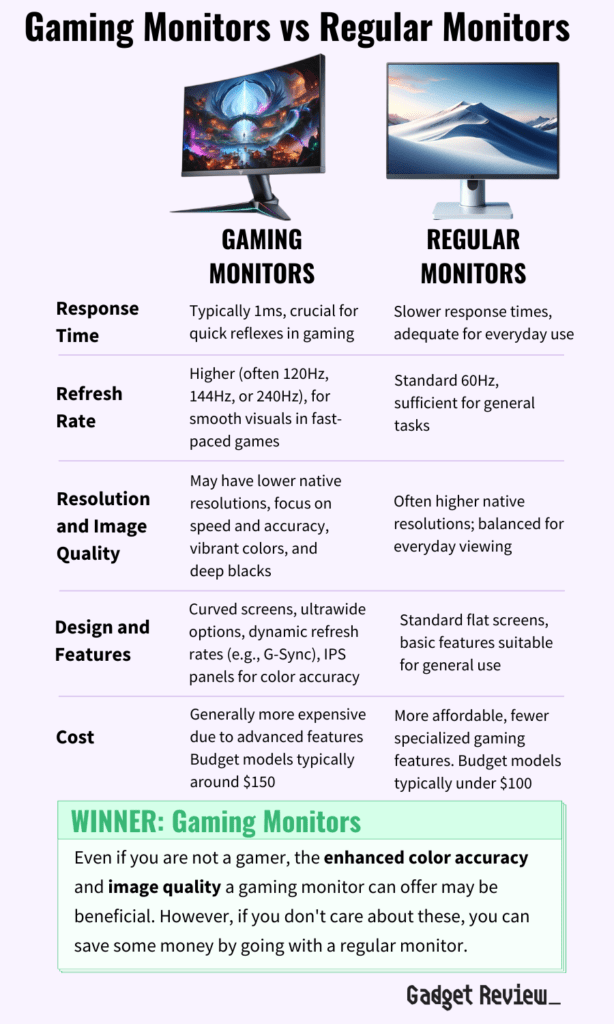
| Feature | Gaming Monitors | Regular Monitors |
|---|---|---|
| Response Time | Typically 1ms, crucial for quick reflexes in gaming | Slower response times, adequate for everyday use |
| Refresh Rate | Higher (often 120Hz, 144Hz, or 240Hz), for smooth visuals in fast-paced games | Standard 60Hz, sufficient for general tasks |
| Resolution and Image Quality | May have lower native resolutions, focus on speed and accuracy, vibrant colors, and deep blacks | Often higher native resolutions; balanced for everyday viewing |
| Design and Features | Curved screens, ultrawide options, dynamic refresh rates (e.g., G-Sync), IPS panels for color accuracy | Standard flat screens, basic features suitable for general use |
| Cost | Generally more expensive due to advanced features Budget models typically around $150 | More affordable, fewer specialized gaming features Budget models typically under $100 |
Response Time and Refresh Rate
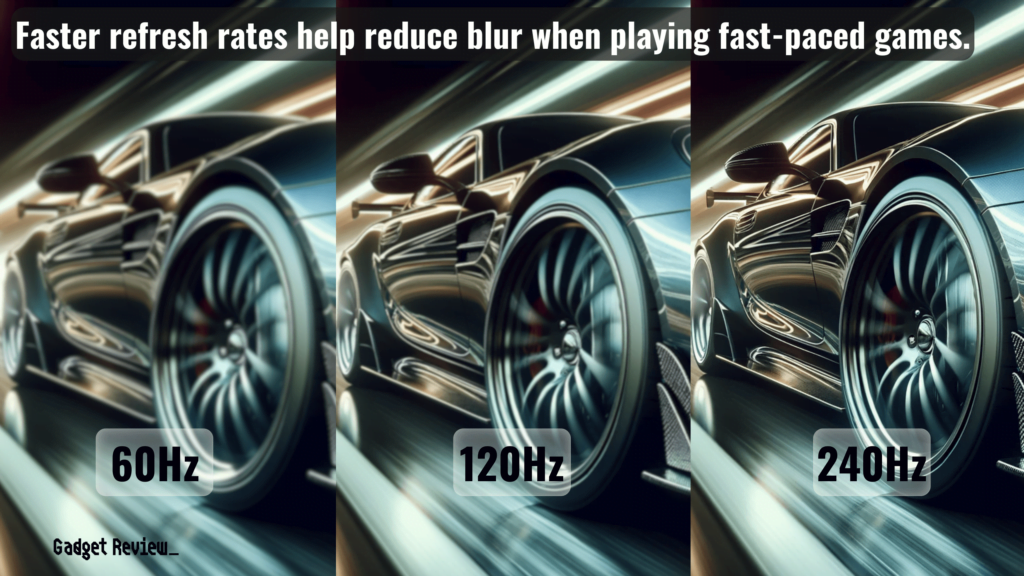
Gaming monitors are purpose-built to handle modern competitive computer games played by serious gamers, so you will find an uptick when it comes to certain specifications over general monitors.
Case in point? Most gaming monitors feature efficient technology like blazing-fast response times and refresh rates, and minimal lag that contribute to a smooth video game and gaming experience.
Gaming monitors are designed for a responsive gaming experience, typically boasting 1ms response times, compared to the slow response times of regular monitors. This is crucial for competitive gamers who rely on quick reflexes.
Newer models often feature a 240Hz refresh rate or higher, providing smooth visuals and a smoother experience compared to the standard 60Hz refresh rate found in many regular monitors, while some models offer a 120Hz refresh rate for a balance between performance and cost.
insider tip
Gaming monitors make effective standard monitors, but the same may not go both ways.
The same cannot be said for standard monitors, which offer slower response times, though you will likely never notice unless you are playing the latest and greatest PC games.
The highest refresh rate monitors on the market can have a hefty price tag, but not all gaming monitors are expensive, and you can get yourself an affordable gaming monitor if you’re on a budget.
Overall it’s key to learn about gaming monitor response times, such as the difference between 2ms vs 1ms, and how they affect gameplay.
Resolution and Image Quality
This may come as a surprise to some, but gaming monitors do not always prioritize resolution and graphical fidelity above all else.
As a matter of fact, you will often find standard computer monitors with higher native resolutions than many gaming monitors.
Why is this? Gaming monitors prioritize accuracy and speed, and higher resolutions demand more processing power, which can lower the response time and refresh rate in addition to increasing lag. 4K gaming monitors do exist, but they do not always offer the tools to get a competitive edge.
STAT: Monitors advertising “99% sRGB” are claiming the screen covers 99% of the sRGB color gamut, which is often considered indistinguishable from 100% when viewed with the naked eye. (source)
Gaming monitors often include color profiles and color reproduction technologies for more vibrant colors and deeper blacks, enhancing the overall gaming performance.
For color accuracy on either type of monitor, you can learn how to calibrate a monitor manually to keep your display’s colors true and vibrant.
However, you may find better resolution when comparing a gaming monitor vs TV.
Design and Features
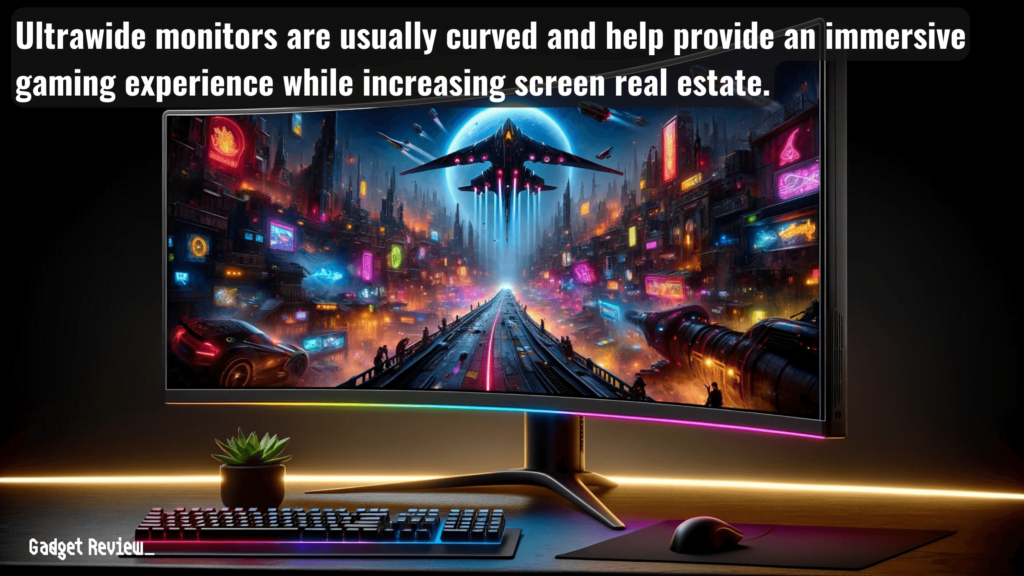
Some gaming monitors, such as ultrawide gaming monitors, may feature curved screens, providing an immersive gaming experience.
Curved monitors are becoming more popular among gamers who want a more immersive experience on a larger screen.
Screen size is an important factor for gamers, with larger screens providing more screen real estate for multitasking.
For those who don’t want larger screens but still want better multitasking, dual monitor setups are another great way to accomplish this and enhance gameplay.
High-end gaming monitors are equipped with specific gaming features like dynamic refresh rates, such as G-Sync monitors, and specialized panel technology for excellent gaming performance.
IPS panels are often favored in gaming monitors for their superior color accuracy and wider color gamut, enhancing the overall visual experience.
The biggest difference between these monitor types lies in their ability to deliver smooth visuals and a responsive gaming experience.
Cost
Dedicated gaming monitors are filled with gaming-centric bells and whistles, so they tend to cost more than traditional computer monitors.
If you want a model with a built-in, high-quality speaker system, that will contribute to the price as well. However, it should be noted that most built-in speakers on monitors are not great, gaming or otherwise.
For gamers who also enjoy console gaming, knowing how to connect an Xbox One to a computer monitor can enhance their gaming experience, especially when using a monitor with a high frame rate and excellent color reproduction.
In summary, the choice between gaming monitors and regular monitors depends on the user’s specific needs, whether it’s for high-intensity gaming or everyday professional use.


